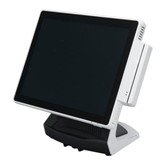allowing them to better calculate the true value of equipment or systems that are being recommended. This important cost-benefit analysis allows management to arrive at a superior conclusion that has a more positive impact on their organisation over a longer period of time.
Broadly speaking, Total Cost of Ownership (or TCO) considers the purchase price, ongoing maintenance and other related costs, along with factors such as the longevity of the product, and weighs those against the benefits that are generated by utilising the proposed solution. Other elements can also be anticipated when estimating the TCO, including the staffing requirements, and environmental and social impacts of the proposal.
One particular challenge that arises when calculating the TCO of a system that involves new or advancing technology is estimating the long-term impacts of a previously unknown concept. For instance, can the expected operational life of the proposed innovation be realistically calculated? And how long will it last before the technology involved is again superseded?
Balancing Product Longevity with Industry Advancement
A good example of this challenge can be found in the Point of Sale industry. 30 years ago, the purchase of an electronic cash register had two main purposes – to record basic sales totals and to safely store the money received. In reality, this was a relatively simplistic business tool, and part of the ‘sales pitch’ at the time was how long a cash register would last. So the effective TCO was calculated by considering the purchase price (which could seem relatively high for this specialised product), but also estimating the useful life of the equipment, which could stretch out to 10 – 15 years.
Roll forward to the introduction of PC-based POS systems, which began building momentum in the early years of the 21st century. This new technology brought many more benefits to the table for business operators, including extensive analysis of sales data, advanced automation at the point of sale and the ability to provide customer specific promotions, including loyalty and charged accounts.
However, computers didn’t (and still don’t) have the same operational life as a traditional cash register, and POS software technology was advancing so rapidly that what was cutting edge at the time of purchase could be well and truly superseded within 2 or 3 years. This complicated the calculation of the TCO of a new POS system. While the product wasn’t going to last as long as a traditional cash register, it would definitely bring many advantages that could positively impact on the efficiency and profitability of the business.
So How Long Should Your New POS Terminal Last?
The Point of Sale industry is currently undergoing a new wave of disruption that will once again affect the calculation of the Total Cost of Ownership. Tablet POS and cloud-based solutions that are charged as a monthly service, rather than being an outright purchase, have become increasingly popular. In part, this is due to the relatively low upfront costs of getting these systems operational. So making a true comparison between the TCO of these products against more traditional POS solutions becomes challenging.
But as a rough guide for TCO considerations, a good quality purpose-built POS terminal will often be robust and reliable enough to last for at least 5 years in a busy hospitality or retail environment and, quite possibly, considerably longer. However, this needs to be balanced against the fact that at the end of that period, the new systems and features that are then available will likely bring significant advantages to your business. So it’s in the lead up to that 5 year point that it would definitely be worth revisiting some further cost-benefit analyses to see whether upgrading your POS is again a good idea.
When weighing up the comparative values of a variety of new point of sale alternatives, consider the Total Cost of Ownership across 5 years. This will give you a fairer indication of which system offers you the greater long-term value for money.













2-205x205.jpg)

